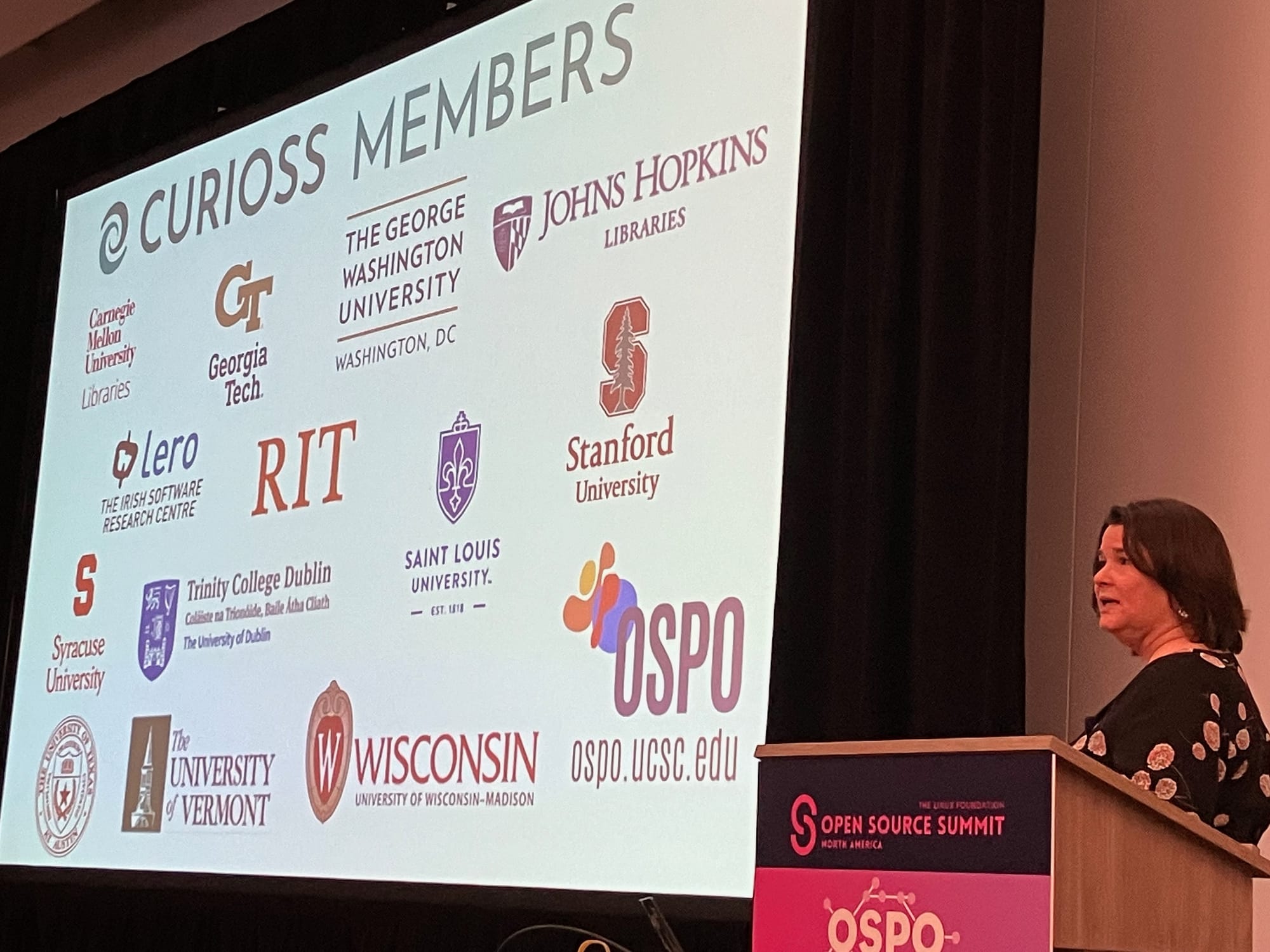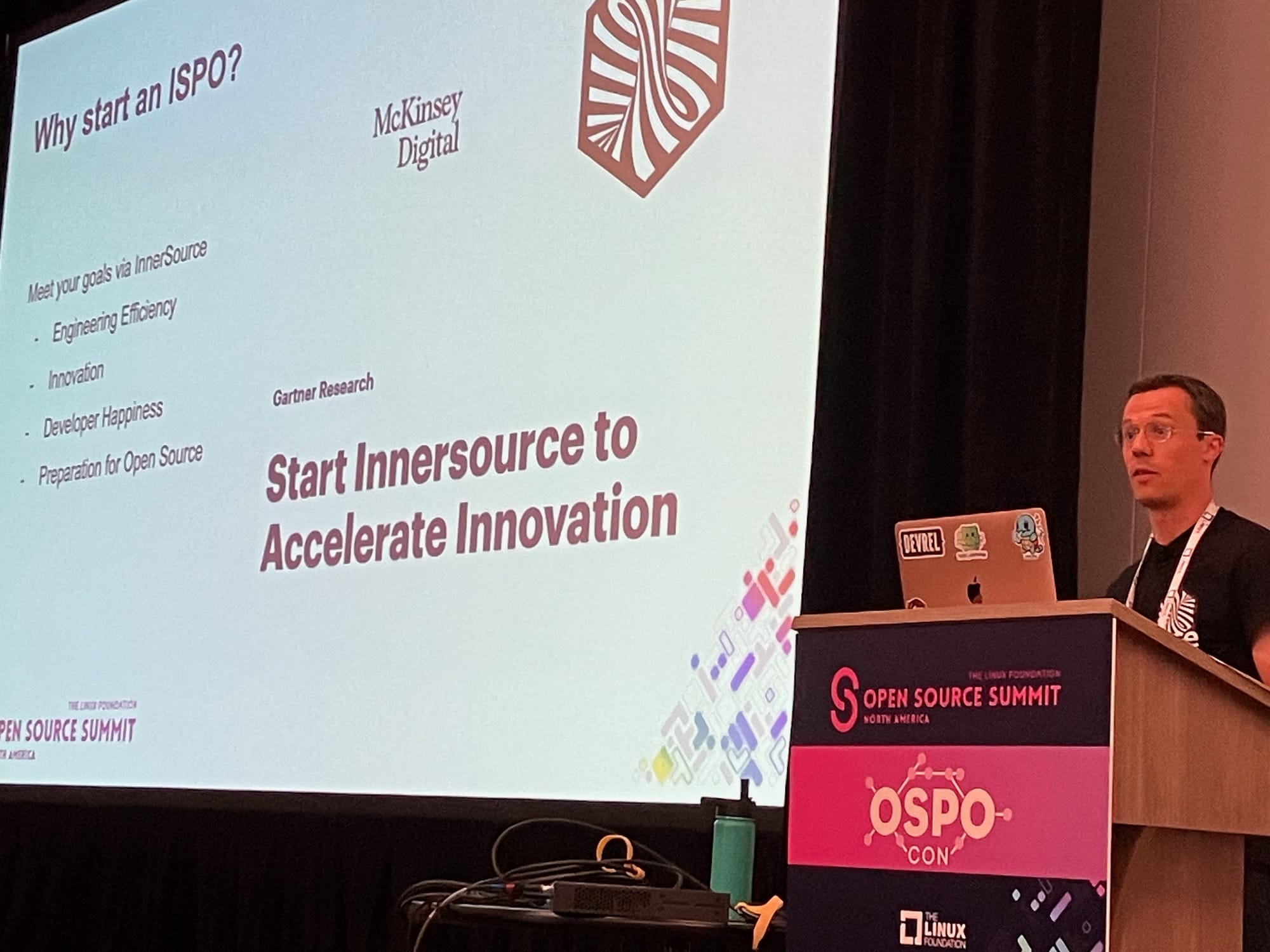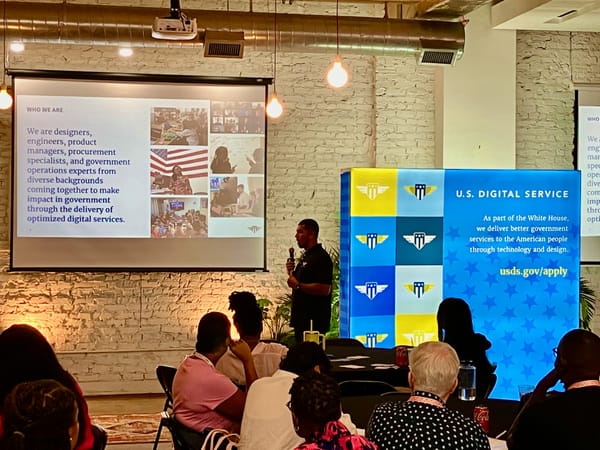Three Takeaways from Open Source Summit North America
OSS Summit is a series of conferences embedded into a conference. We attended the OSS Summit North America last month in Seattle and focused on OSPOCon.

The Open Source Atlanta newsletter returns after a hiatus for travel and other events. This week we are recapping last month’s Open Source Summit North America, and we’ll be back on schedule next week with another issue.
The Linux Foundation has an interesting format for its Open Source Summits, with three events held annually in North America, Europe and Japan. Instead of a single focus or track, OSS Summit is a series of conferences embedded into a conference. At the embedded OSPOCon, it was interesting to find the leaders of Open Source Program Offices from Amazon, Capital One, Carnegie Mellon, Fannie Mae, Ford, Intel, GitHub, JP Morgan, Toro, Toyota and more gathered together and seeing the true spirit of how they support one another as a niche community.
Here are three takeaways from the conference:
1. Linus Torvalds Defines Open Source
In a keynote discussion with Dirk Hohndel from Verizon, the creator of Linux and Git provided a plain-spoken reason why open source exists:
“While my products start with something that I need, the things that actually keep them going is the fact that this is actually useful to other people,” Torvalds said. “Because if it’s only something for me, it’s not really interesting in the long run.”
Torvalds also got some laughs when describing the motivation for his products:
“Every single project I’ve started has always started from me being frustrated with other people being incompetent,” Torvalds said. “The reason I started doing Linux was that I couldn’t afford the real thing, and I said ‘How hard can it be?’ and it turns out it can be pretty hard because here I am 33 years later and still working on it.”
Torvalds provided perspective that it’s also fine to have a mature open source product that serves its purpose.
“Calm and steady and boring is what I aim for, and it should be,” Torvalds said. “I mean, with a 30-year-old project plus, it shouldn’t be one of those things where new and exciting things happen. I’ve actually been saying that for decades.”
2. Growth of Open Source Program Offices at Universities
Nithya Ruff, the director of Amazon’s Open Source Program Office, looked at trends in OSPO’s over the last year in her presentation Five Key Requirements for a Successful OSPO. Ruff highlighted the public sector, and specifically universities, as the biggest growth area for OSPO’s since 2022.
The Alfred P. Sloan Foundation has played an important role in this growth, providing grants to help several universities establish OSPO’s in recent years, including Georgia Tech. In the OSPOs in Academia talk, Stephanie Lieggi highlighted a $1.85 million grant from the Sloan Foundation to expand UC Santa Cruz’s OSPO to a partnership across six campuses in the University of California system. The ambitious program aims to serve as a model for other university systems to follow.

3. InnerSource is a Thing
Russell Rutledge and Ana Jimenéz Santamaria covered InnerSource and the similarities and differences between OSPOs and ISPOs.
With InnerSource, enterprise organizations can realize the benefits of open source practices while balancing the needs associated with proprietary information on internal projects.
From the InnerSource Commons community, the definition of InnerSource:
InnerSource takes the lessons learned from developing open source software and applies them to the way companies develop software internally. As developers have become accustomed to working on world class open source software, there is a strong desire to bring those practices back inside the firewall and apply them to software that companies may be reluctant to release. For companies building mostly closed source software, InnerSource can be a great tool to help break down silos, encourage internal collaboration, accelerate new engineer on-boarding, and identify opportunities to contribute software back to the open source world.





